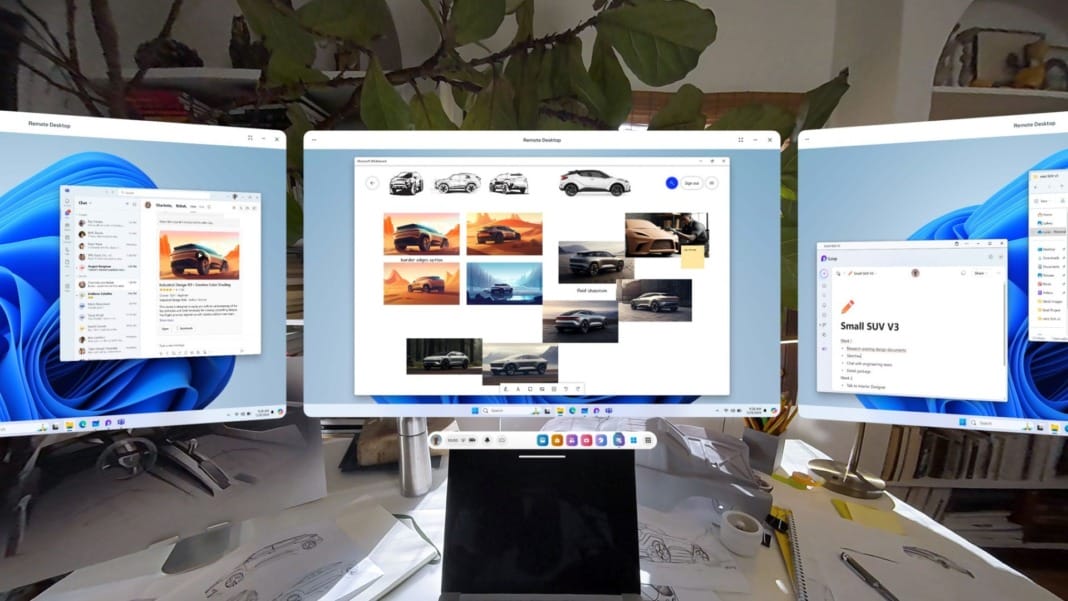The new Mixed Reality Link feature for Windows 11 is now available to all users of Meta Quest 3 and 3S headsets. The update follows the latest release of Meta’s Horizon OS, which brings immersive productivity experiences to a broader audience.
Initially launched in a limited preview last year, Mixed Reality Link allows users to connect their Windows PC to a virtual workspace through their Meta Quest headset. The full rollout marks a major step towards mainstream adoption of mixed reality tools for both work and entertainment.
Expanding virtual productivity on Windows 11
Once installed on a Windows 11 computer, Mixed Reality Link enables users to pair their PC with a Meta Quest headset. This connection creates a virtual desktop that mirrors and expands a traditional multi-monitor setup. Within this immersive workspace, users can interact with multiple high-resolution screens in a 3D environment, blurring the line between physical and digital workflows.
The feature is also compatible with cloud-based platforms, including Windows 365 Cloud PC, Azure Virtual Desktop and Microsoft Dev Box. This means professionals can access powerful computing environments remotely, using only their headset and a reliable internet connection.
The experience closely mirrors Apple’s Vision Pro virtual desktop, but Meta’s approach is aimed at a much broader market. With the Quest 3S priced from US$300 compared to Apple’s Vision Pro at US$3,500, the affordability difference makes Meta’s version far more accessible to everyday consumers and remote workers.
Meta’s vision for the future of virtual work
The introduction of Mixed Reality Link underscores Meta’s long-term investment in immersive technologies. The company, led by CEO Mark Zuckerberg, has been steadily expanding its ecosystem of virtual and augmented reality products to create a more integrated digital experience.
Earlier this year, Meta previewed an experimental VR headset that it claims will offer visuals “indistinguishable from the physical world.” This announcement reinforces the company’s ambition to redefine how people work, communicate and experience content in mixed reality.
In addition to its VR headsets, Meta has been expanding its lineup of wearable technology. Its latest Ray-Ban smart glasses feature Meta AI integration, real-time language translation and the ability to capture 3K video. These innovations further blur the boundary between digital assistance and daily life, complementing the immersive computing experience offered by Mixed Reality Link.
A growing market for immersive collaboration
The broader rollout of Mixed Reality Link reflects a rising interest in virtual productivity tools across industries. As more companies adopt hybrid and remote work models, the demand for immersive environments that enhance focus and multitasking continues to grow.
By combining Windows 11’s robust ecosystem with Meta’s affordable hardware, the new feature provides a practical alternative to high-end mixed reality solutions. It positions Meta not just as a gaming and entertainment brand, but as a serious player in the future of digital collaboration.
With its lower price point, wide compatibility and integration with Microsoft’s cloud infrastructure, Mixed Reality Link may help accelerate mainstream adoption of virtual workspaces, bringing immersive productivity within reach of millions of users worldwide.





